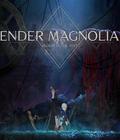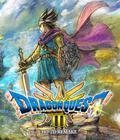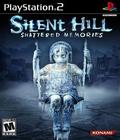When Konami decided to introduce the gaming world to Silent Hill more than 10 years ago, it brought along a horror game that was decidedly different from what PlayStation fans had already experienced. Whereas horror games on the console simply brought up their scares from fighting off monsters or supernatural beings that unexpectedly popped up on-screen, Konami decided that the atmosphere should be the element that makes players feel jumpy and uneasy. There were still monsters to be fought and needlessly complicated puzzles to solve, but the unnerving music and grim atmosphere made players feel like every step they took was going to be met with knife-wielding babies or faceless twitching nurses.
Couple that with a hero who couldn't aim right or wield a weapon properly, and you had the makings of a standout entry in the PlayStation library. The psychological horror continued in the series and has become a haven for gamers wishing to have more than just gore in their horror experiences. When it was announced that the game was being remade for the series' 10th anniversary, gamers were thrilled at the prospect of the original getting technical improvements. When it was later explained that the original wasn't getting a remake but a reimagining, players wondered why Konami and developer Climax would mess with what was obviously a good formula. The end result, Silent Hill: Shattered Memories, won't replace the original anytime soon, but it will stand as being an exceptionally good entry in the series to date.
The reimagining doesn't mean that the overall premise changed, as the story from the initial version remains here. You play the role of Harry Mason, author and loving father. A massive snowstorm and subsequent icy roads cause you to lose control of your car and crash. When you regain consciousness, you find yourself in the town of Silent Hill, and your daughter is missing. Your ultimate goal is to find her, preferably alive.
Premise aside, the nature of the game makes the title feel much different from the initial entry in the series and the rest of the games in the franchise. The first major difference you'll see comes in the form of psychiatric interviews at the beginning of the game. They start with a basic questionnaire that seems to have no impact on the game. Over time, the game will be interrupted with more of these short sessions, which are littered with similar-activities like coloring a picture of a house or dividing up pictures to show who is dead or who is sleeping. Eventually, you realize that these sessions have a direct impact on things, such as the monsters, the ending and the appearance of the supporting characters, making you want to replay those sequences again just to see how different things can get.
These factors are also impacted during the game's exploration sequences. Unlike past games, monster activity is restricted to the nightmare sequences so you can freely explore the surroundings to take pictures with your camera and uncover clues about where your daughter is. These sequences are no less frightening, though, since the ghosts you encounter and other supporting characters always give off the vibe that something isn't right with the town and surrounding areas. The final set of sequences, nightmare sequences, will be familiar to series fans as the time the town almost literally goes to hell. Here, hell is represented with the town and inhabitants encased in ice as you do your best to get back to reality. This is also where one of the biggest changes to the game takes place.
By far, the biggest change made to Shattered Memories has been one of the more controversial ones. In past games, the protagonists weren't always good fighters. With the exception of Silent Hill: Homecoming, every hero in these games was better off with a melee weapon than a gun due to their inexperience with firearms. The hero here doesn't have to worry about that because he can't fight at all. No guns, sticks, knives or bats ever enter his hand. With the exception of flares he can use to keep creatures at bay, all he can do in the nightmare worlds is run for his life and hope to find the exit. Combat has never been a key feature in the series, but ripping it away will turn off gamers who are trying to fight back against those pursuers. If you don't mind the lack of combat, though, you'll find a new source of tension as you try to find the best path to the exit all while avoiding creatures that jump out at you from different angles. Things like chasms and walls will slow them down, but the fact that they can also overcome these hindrances only drives you to find the exit quicker and upholds the series' trademark scare factor quite well.
With all of the differences found here, does Shattered Memories rely on name recognition alone to project a quality experience? The answer is a hearty no. Despite only being around six to eight hours in length, the story is tightly told, with little to no room for extra fluff seen in other stories. The structure is similar to other games in the series, with its numerous twists and turns that keep you guessing about the outcome until the very end. Its focus on the town and the inhabitants is the true source of horror, not the monsters also present there. It's also a dynamic story, and not just for the multiple endings. Monsters, supporting character appearances, and phone messages will all change depending on what you do in the game and on how you respond during the psychiatric evaluations. By choosing to tell a layered story without relying on crutches or having overly complicated puzzles that serve no other purpose than to lengthen gameplay, the game stands out as a perfect entry in the series.
Shattered Memories was made with the Nintendo Wii in mind, and while the controls for the PS2 version are still very good, it could have been streamlined just a little more for a console without motion controls. Controlling Harry is quite intuitive if you're already used to third-person action games with dual-stick setups like Resident Evil 4. The only catch is that the right analog stick is used to replicate the flashlight, so turning is better handled with the left analog stick rather than the right if you want to turn faster. Without any fighting to be done, it's good to know that all of the actions you'll need during chase sequences — such as busting open doors, climbing walls and laying down obstacles —are handled with a very responsive X button. This all sounds fine, but the streamlining comment comes during some of the exploration sequences. Certain things, like cabinets and drawers, still require basic interaction, like pulling and closing for you to get key items from them. On the Wii, this was handled by the remote acting like a floating mouse, but for the PS2, the right analog stick tries to emulate the remote functions. It works thanks to the fixed speed, but it would have been nice to skip over the basic opening and closing motions just to make it seem less obvious that this wasn't the target system for the title.
In most cases of multiplatform games, the PS2 version ends up being much worse than the others, especially in the graphics department. While the PS2 version of Shattered Memories doesn't quite match up to what players see on the Wii, specifically 480p support, it certainly can't be called inferior. The environments look great, especially for a game this late in the system's life cycle. There's plenty of detail in buildings and everyday objects, including a good number of labels, posters and boxes with legible text on them. The particle effects, specifically the falling snow, really add to the notion that a large snowstorm is occurring, but it does a good job of not slowing down the frame rate to a crawl. The transition from snowed-in town to frozen wasteland is dramatic; ice glazes over streets and buildings as objects twist and bend, and people become ice statues, complete with icicles hanging from their bodies.
The real highlight of the environments, though, is the lighting. Darkness is easy to replicate, but the light emanating from the flashlight does a good job of being dynamic and casting just the right amount, depending on how far or close you are to an object, time of day, etc. It's something that's not really expected from this system, so it's great to see it accomplish all of this in widescreen. Another item to note would be the filter used in the game, which is meant to look like an old videotape being played back on a worn-down VCR. The effect works well and becomes a source of enjoyment once you progress further into the story.
With all of the good lumped on the game in this area comes one blemish. Overall, the characters and monsters look good, mimicking the quality in polygons and textures seen on the numbered entries in the series (Silent Hill 2, 3 and 4). They animate well in cut scenes and in-game, but there were a few instances of seams being visible around their mouths while speaking. It happens mostly on the minor characters early on in the game, but it is very noticeable, especially when compared to the Wii version, which doesn't have this.
When it comes to sound, the series has always been a benchmark for what other horror games aspire to do and this entry is no different. The music still does its job in providing an eerie mood during the exploration sequences, escalating at just the right moments to either highlight important areas or spook the player into thinking so. During the nightmare sequences, the music remains exceptional by heightening the tension throughout, forcing you to want to run even if you really want to take a breather. Interestingly, outside of the nightmare sequences, the music during exploration is quite sparse. Most of the game is spent in silence, with nothing but the sound effects filling the air. Even though the game doesn't sport explosions, gunfire or screams of terror, they do a great job of keeping the tension high. Simple things, like the sound of snow-filled wind passing through the woods to the crackle and static of approaching a spirit, keep things feeling uneasy. Like earlier games in the series, the voices are delivered without feeling too campy or forced. The only possible exception to this would be the psychiatrist, who might sound too sinister for some players. Overall, this is a game where the speakers need to be turned up to let your ears appreciate what's in store.
Silent Hill: Shattered Memories may be considered one of the last significant games to come out for the PS2, but it is also one of the better ones. Everything about it, from the graphics to the sounds to the controls, ranges from very good to exceptional and shows that developers can still squeeze out a good gaming experience from such an old system. More importantly, it emulates the ideal of the first game in that there are alternate ways of telling a good horror story beyond what gamers have already come to expect from the genre. Fans of the series will have already obtained a copy of the game, while gamers who aren't squeamish about cursing and mature themes will do well to pick up this one as well.
Score: 8.8/10
More articles about Silent Hill: Shattered Memories












 Harry Mason wakes up after a car accident to find that his daughter Cheryl is missing. He'll wander the snowy streets of Silent Hill searching for answers of her disappearance, but when the world freezes over, he will need to escape the lumbering demons that haunt his steps.
Harry Mason wakes up after a car accident to find that his daughter Cheryl is missing. He'll wander the snowy streets of Silent Hill searching for answers of her disappearance, but when the world freezes over, he will need to escape the lumbering demons that haunt his steps.




























